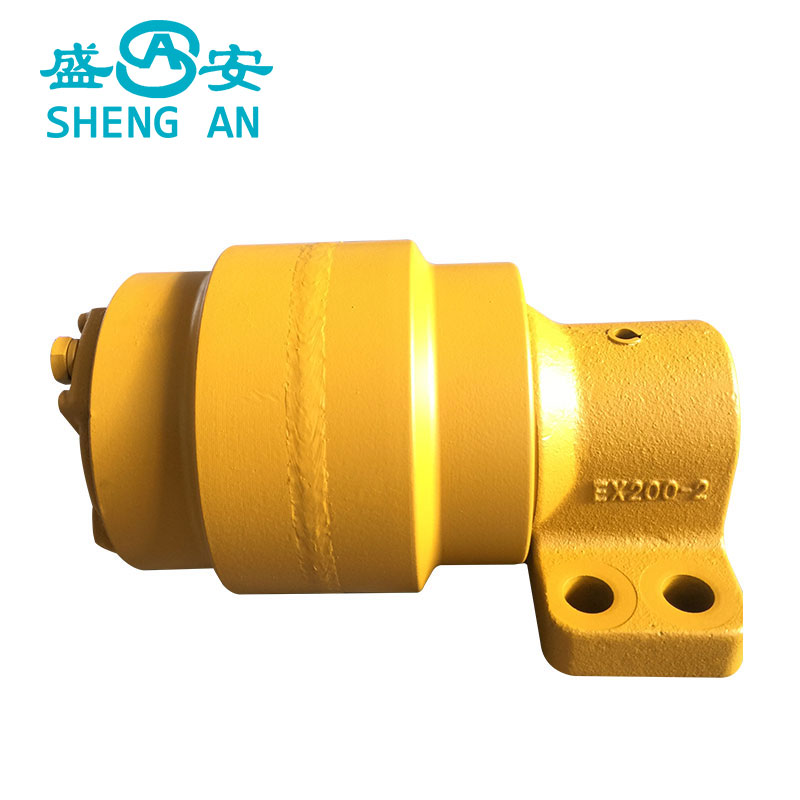Understanding the Distinctive Role of Carrier Rollers in Conveyor Systems
2024-03-04
Introduction:
In the intricate network of conveyor systems, various types of rollers work in harmony to facilitate the smooth and efficient movement of materials. Among these rollers, carrier rollers stand out as key components with unique characteristics and functions. In this blog, we'll explore how carrier rollers differ from other types of rollers used in conveyor systems, highlighting their distinctive features and contributions to material handling operations.
Different Types of Rollers in Conveyor Systems:
Before delving into the specifics of carrier rollers, it's essential to understand the roles played by other types of rollers commonly found in conveyor systems:
1. Idler Rollers: Idler rollers are passive rollers positioned along the conveyor frame to support the conveyor belt and guide its movement. Unlike carrier rollers, idler rollers do not bear the weight of the conveyed load but instead provide support and maintain proper belt alignment.
2. Return Rollers: Return rollers are located beneath the conveyor belt on the return side and are responsible for supporting the empty return run of the belt. These rollers help maintain tension in the belt and prevent sagging or slackness during operation.
3. Impact Rollers: Impact rollers are designed to absorb and cushion the impact of heavy or irregularly shaped materials as they are loaded onto the conveyor belt. These rollers feature reinforced construction and resilient materials to withstand impact forces and protect the conveyor belt from damage.
4. Guide Rollers: Guide rollers, also known as side guide rollers or tracking rollers, assist in maintaining proper alignment and tracking of the conveyor belt. These rollers are typically positioned at strategic points along the conveyor frame to prevent belt deviation and ensure smooth operation.
How Carrier Rollers Differ:
Now, let's explore the distinctive features and functions that set carrier rollers apart from other types of rollers:
1. Load-Bearing Capacity: Unlike idler rollers, which primarily provide support for the conveyor belt, carrier rollers bear the weight of the conveyed load as it moves along the conveyor system. Carrier rollers are designed to withstand heavy loads without deformation or failure, making them essential for transporting materials in bulk handling applications.
2. Continuous Support: While return rollers support the return run of the conveyor belt, carrier rollers provide continuous support along the length of the belt, ensuring stability and preventing sagging or mistracking. Carrier rollers are spaced evenly along the conveyor frame to distribute the weight of the load evenly and maintain proper belt tension.
3. Versatility and Customization: Carrier rollers come in a variety of designs and configurations to accommodate different conveyor applications and operating conditions. They can be customized with various bearing types, sealing mechanisms, and surface finishes to suit specific requirements, such as high-speed conveying, corrosive environments, or heavy-duty applications.
Conclusion:
Carrier rollers play a unique and indispensable role in conveyor systems, offering load-bearing support, continuous guidance, and stability for the conveyor belt and the conveyed load. While other types of rollers serve important functions such as supporting, guiding, and cushioning, carrier rollers stand out for their ability to bear heavy loads and ensure smooth and efficient material handling operations. By understanding the distinctive features of carrier rollers and their contributions to conveyor systems, businesses can optimize their material handling processes and enhance productivity and efficiency.



